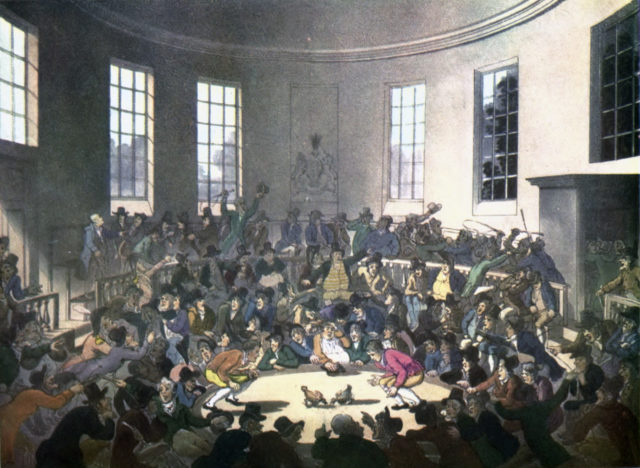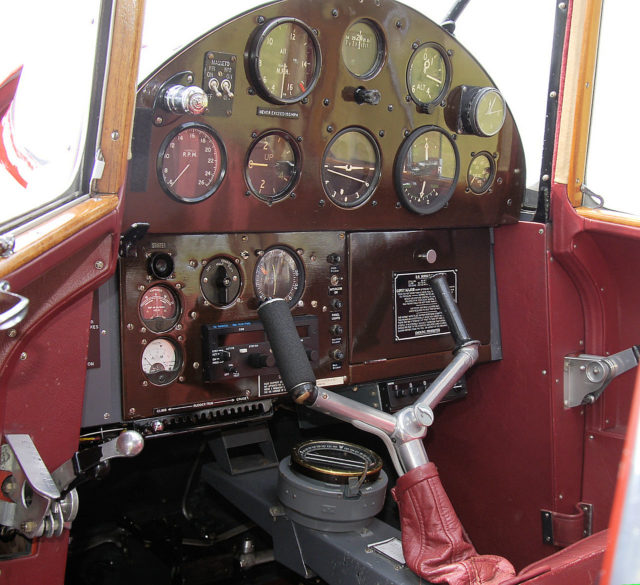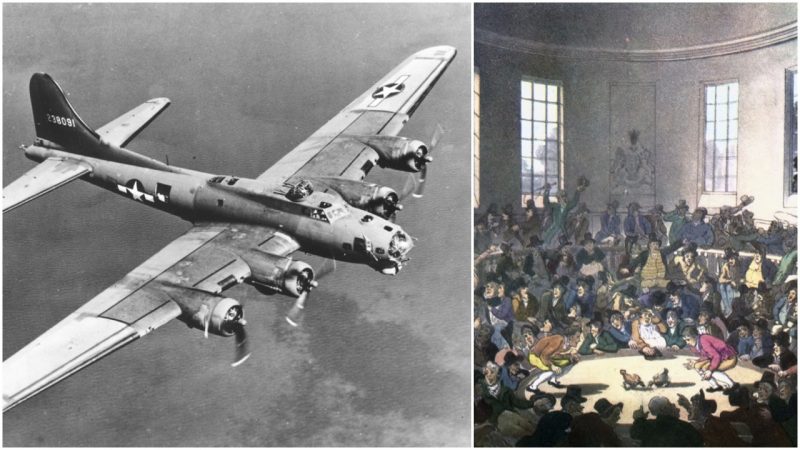The first “cockpits” were actual pits dug into the ground and built to hold “cockfights” whereby two cock birds would fight to the death.
We see the term cockpit first appear in England around the 1500s. Fast forward 200 years and by the 1700s, “cockpit” was a phrase used to refer to any battle or conflict, particularly in France and also in Belgium.
Many experts are convinced that the term does come from a place where cock fights were held. As we mentioned earlier the term was first recorded in the later part of the sixteenth century, when Elizabeth I was on the throne.

Cock fighting, bear-baiting and bull-baiting were all popular pastimes. A cockpit was a circle with a small barrier around it so that the birds couldn’t escape. It was a great spectators sport and seating was arrange around the pit so you could bet on and watch the fight – reminiscent of the mighty Roman amphitheatres.
The first written record of the term was mentioned in Thomas Churchard’s The Worthiness of Wales of 1587: “The mountains stand in roundness such as it a Cock pit were”. The bard himself William Shakespeare uses the term as an allusion to the round shape and noisy and cramped conditions of a theatre when the Chorus in Henry V laments its inadequacy to portray tumultuous events: “Can this cockpit hold / The vasty fields of France? Or may we cram / Within this wooden O the very casques / That did affright the air at Agincourt?”
The great King Henry VIII, was a hunting man with many forests and chases across England. At Whitehall which was a one of his many royal places he had bowling alleys, tennis courts and a cock-pit built. A century later these sites were taken over for government offices such as the Treasury and the Privy Council. That explains the entry in Samuel Pepys’s Diary for 20 February 1659: “In the evening Simons and I to the Coffee Club, where nothing to do only I heard Mr. Harrington, and my Lord of Dorset and another Lord, talking of getting another place at the Cockpit, and they did believe it would come to something.”
Then in a strange leap of evolution, the term started to be applied to warships – specifically the rear end of the lower decks. When ships would engage each other, the ships surgeon and his team would retreat below to the lower decks. Protecting the surgeon was crucial as when the wounded started to pour in he was the only man who could save them.

If you have ever been on a sail ship, you will know that below decks, it is cramped, smelly and dark. As we know during a battle, the lower decks is where the wounded were taken so that the surgeon could try his best to save them – the lower decks where covered in blood. It was reminiscent of a cockpit, blood, fighting and terror and this is how cockpits on ships got their name.
Now lets fast forward to a huge jump in technology – the airplane. By 1914 the term “Cockpit” was used by WWI pilots who applied it to the cramped flying conditions of their fighter planes – even in modern day jet fighters, the conditions are still a cramped and a tight space. Cock fighting is banned in most western countries but the cockpit lives on.
